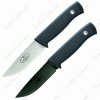Obi Heed Kenobi
Touchdown! Greaser!
- Joined
- Jan 19, 2007
- Messages
- 10,918
- Display Name
Display name:
iBo Deeh Ibonek
I always wear my survival vest while flying. The items you carry in the aircraft are useless if you need to escape from a sinking / burning airplane.
I carry quite a lot of items, but, as surprising as it may sound, the most essential devices are, in my opinion, the following:
1. Personal Locator Beacon - 406 MHz PLB. With this light, small and inexpensive beacon, the COSPAS SARSAT satellites will locate you in under one hour, greatly enhancing your survival chances.
2. Waterproof Garmin GPS.
3. VHF Transceiver with spare battery.
On top of the above, I also carry (in the survival vest):
- Water Purification Tablets
- Pocket Water-Filter
- LED Torch (water proof-high intensity)
- Foldable Water Bag (5 Liters)
- Spare batteries
- ACR Emergency Strobe (waterproof)
- Foldable Cap
- Survival Sleeping Bag (AMK Thermolite)
- Spare socks (sealed in waterproof pack)
- Hand Warmers Packs X 4
- Water Canteen (Camel Back )
- Bandana
- Survival Matches in Waterproof Container
- Lighter
- Signalling Mirror (USAF Type)
- Leatherman Survival Tool
- Survival Knife
- 20 M of parachute cord
- Gill Fishing Net
- Fishing Kit in Sealed Container
- Magnesium Fire Starter
- Foldable Rain Poncho
- Compass
- Mosquito Repellent
- Sun Blocker
- FOX 40 Whistle
- Paper & Pencil
- First Aid Kit including:
a. Military Type Tourniquet (Silicone Rubber - IDF Type)
b. Military Type Bloodstopper Dressing
c. SAM Splint
d. Neomycin Ointment
e. Scalpel Blade
f. Iodine Solution
g. Syringe + Needles (X 3)
h. Medications
i. Gauze Pads (4"x4")
j. Surgical tape
k. Band Aids
l. Kerlix Gauze Roll
I know that the above list is fairly extensive but, like Benjamin Franklin said: " In failing to prepare you are preparing to fail".
I guess that my SAR training is one of the reasons I carry all that kit...
Wow - that is a pretty extensive list, but every single one of those is useful. If you lived through the crash, I think you'd be fine with that list.
I keep adding more to this thread, but there are two other things that seem common sense to me, but are easily overlooked - footwear and clothing.
If you're going to be flying in a remote/rugged area, footwear is important - you don't want to be wearing flipflops. So a good pair of waterproof boots or trail shoes are important. Also, if there's a fire, a pair of leather boots will hold up a lot better than tennis shoes (also goes for clothing - don't wear a synthetic base layer, it will melt to your skin).
Clothing - wear something bright and visible. What good is a camo jacket going to do you if you're trying to be spotted?









